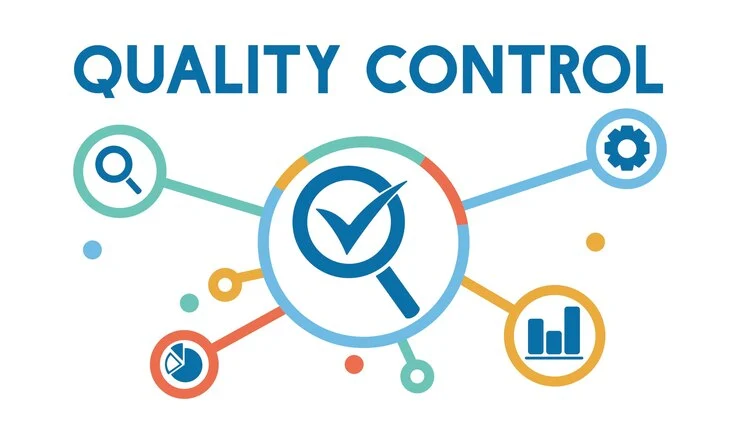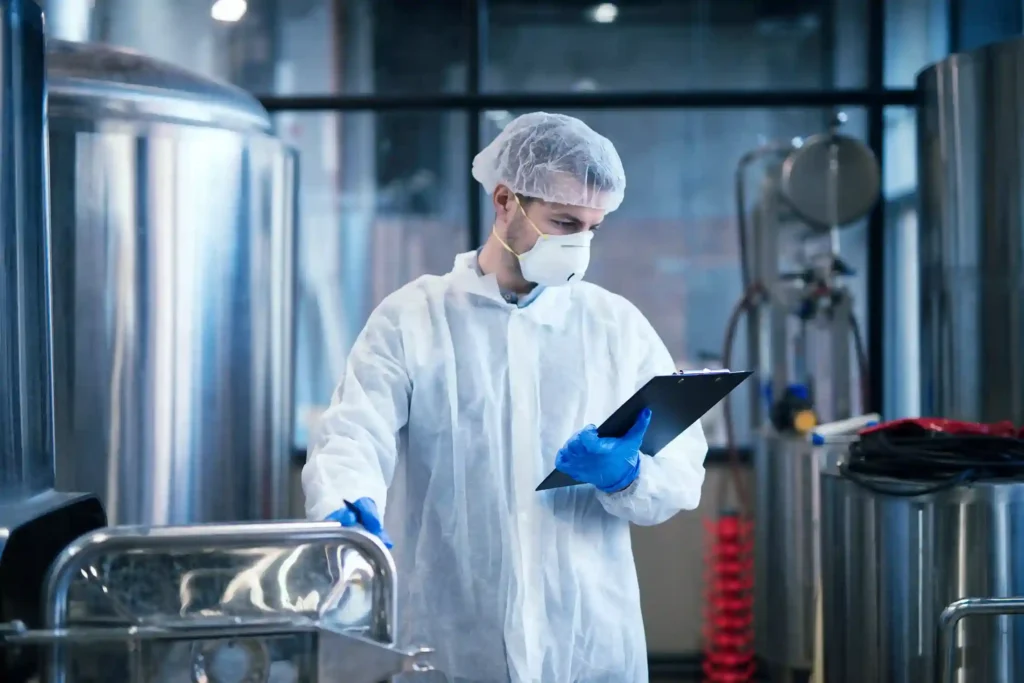Introduction
Quality Control in Pharmaceutical Manufacturing is a critical process that ensures the safety, efficacy, and consistency of pharmaceutical products. Every pharmaceutical company must adhere to strict standards to guarantee that their products are safe for consumers. But what exactly does Quality Control in Pharmaceutical Manufacturing involve? It’s more than just testing—it’s about ensuring that each product meets the highest standards from start to finish.
Why Quality Control in Pharmaceutical Manufacturing is Vital
Quality Control in Pharmaceutical Manufacturing is essential for the health and safety of patients. A small variation in drug formulation can have serious consequences, and that’s why strict QC measures are necessary. From raw materials to final products, maintaining consistent quality is crucial to prevent any health risks or recalls.
QC in Pharmaceutical Manufacturing vs. Quality Assurance
Quality Control in Pharmaceutical Manufacturing and Quality Assurance (QA) are closely related but distinct. While QA focuses on creating systems to prevent defects, QC involves verifying that products meet required standards through direct testing and inspection. Both play vital roles in maintaining pharmaceutical product quality, but QC is hands-on and product-focused.
Key Components of Quality Control in Pharmaceutical Manufacturing
Ingredient Testing in Quality Control
Before manufacturing even begins, the raw materials used in pharmaceutical products undergo rigorous testing. Ingredient testing is a fundamental part of Quality Control in Pharmaceutical Manufacturing, ensuring that each ingredient meets purity, potency, and concentration requirements.
Process Validation in Quality Control
Another essential component of QC in Pharmaceutical Manufacturing is process validation. This process ensures that the manufacturing method consistently produces high-quality products. The goal is to minimize variations in drug production by validating equipment, materials, and methods before scaling up production.
Final Product Testing in Quality Control
Once the drug is manufactured, the final product undergoes extensive testing to ensure that it meets all required specifications. Final product testing in Quality Control in Pharmaceutical Manufacturing is critical to prevent any substandard products from reaching the market.
The Role of Regulatory Bodies in Quality Control in Pharmaceutical Manufacturing
Pharmaceutical companies must comply with various regulatory bodies such as the FDA, WHO, and EMA. These agencies set rigorous standards for Quality Control in Pharmaceutical Manufacturing. Compliance with these regulations ensures that products are not only safe but also meet international quality standards.
Methods of Quality Control in Pharmaceutical Manufacturing
Microbiological Testing in QC
Microbiological testing is an essential part of Quality Control in Pharmaceutical Manufacturing. It helps identify microbial contamination in drugs, which is particularly important for injectable or sterile products. This testing ensures the drugs are free from harmful microorganisms.
Chemical Testing in QC
Chemical testing is a critical part of ensuring that pharmaceutical products are consistent and effective. It checks the identity, potency, and stability of the active ingredients in the drug. This aspect of QC in Pharmaceutical Manufacturing ensures that the right amounts of ingredients are present in every batch.
Physical Testing in QC
Physical testing involves checking the physical properties of the drug, such as tablet hardness, dissolution rate, and moisture content. These tests are crucial in ensuring the drug’s performance, as any variation in these properties can affect the drug’s effectiveness. Physical testing is a key aspect of Quality Control in Pharmaceutical Manufacturing.
Challenges in Quality Control in Pharmaceutical Manufacturing
Despite its importance, Quality Control in Pharmaceutical Manufacturing is not without challenges. Manufacturers often face difficulties such as raw material variability, equipment malfunctions, and the complexity of adhering to strict regulatory requirements. Overcoming these challenges requires constant vigilance and a commitment to quality.
Quality Control in Pharmaceutical Manufacturing Across Drug Development Stages
Quality Control in Research and Development
During the early stages of drug development, Quality Control in Pharmaceutical Manufacturing starts with small-scale testing. Here, manufacturers test drug formulations for stability, effectiveness, and safety, ensuring that they will work for clinical trials.
Quality Control in Clinical Trials
Once the drug reaches clinical trials, maintaining high standards of Quality Control in Pharmaceutical Manufacturing is crucial. This includes testing drug batches for consistency and ensuring that all clinical trial supplies meet the required specifications.
Quality Control in Production and Manufacturing
In the production phase, strict adherence to QC in Pharmaceutical Manufacturing processes ensures that every batch is identical and meets all regulatory standards. This phase involves continuous testing of raw materials, processes, and final products to maintain consistency and quality.
Standard Operating Procedures (SOPs) in Quality Control
SOPs are crucial in ensuring consistent quality throughout the manufacturing process. QC in Pharmaceutical Manufacturing relies on these standardized procedures to prevent errors and ensure that all processes are carried out according to regulatory standards.
Technology and Automation in Quality Control
The rise of automation and advanced technologies has revolutionized Quality Control in Pharmaceutical Manufacturing. Technologies like robotics and AI allow for more accurate, efficient, and faster testing, reducing the risk of human error and ensuring more consistent results.
Common Issues in Quality Control and Solutions
Even with the best systems in place, issues like contamination, batch inconsistency, and equipment malfunctions can arise. Addressing these problems requires a proactive approach, with solutions such as frequent equipment maintenance, robust training programs, and regular internal audits.
Benefits of Effective Quality Control in Pharmaceutical Manufacturing
Effective Quality Control in Pharma Manufacturing offers numerous benefits, including increased patient safety, improved product consistency, reduced risk of product recalls, and compliance with global regulations. Manufacturers can also enhance their reputation and gain consumer trust by producing high-quality products.
Emerging Trends in Quality Control in Pharmaceutical
The field of Quality Control in Pharmaceutical Manufacturing is evolving rapidly. Emerging trends include the use of real-time monitoring systems, predictive analytics, and digital quality control methods. These innovations promise to improve the efficiency, accuracy, and consistency of drug manufacturing.
Best Practices for Ensuring High Standards in Quality Control
To maintain high standards of Quality Control in Pharmaceutical Manufacturing, companies should implement best practices like continuous employee training, regular equipment calibration, and adherence to strict SOPs. Regular audits and customer feedback can also help identify areas for improvement.
Conclusion
Quality Control in Pharmaceutical Manufacturing is an indispensable part of drug development and production. It ensures that every product is safe, effective, and consistent. By maintaining rigorous QC standards and staying updated on industry innovations, manufacturers can guarantee that their products meet the highest standards, protecting both patient health and their brand’s reputation. For further inquiries or a demo, you can Contact Trident Information Systems. Stay ahead of the innovation curve! Follow our LinkedIn page for the latest insights and updates on how AI-Powered Visual Quality Inspection are revolutionizing The industry.
FAQ
1. What is QC in Pharmaceutical Manufacturing?
QC in Pharmaceutical Manufacturing ensures that all pharmaceutical products meet the required standards of safety, efficacy, and consistency.
2. How does Quality Control affect pharmaceutical products?
Quality Control ensures that each product is tested for consistency, safety, and effectiveness, preventing substandard drugs from reaching consumers.
3. What role do regulatory bodies play in Quality Control?
Regulatory bodies like the FDA set the standards for QC in Pharmaceutical Manufacturing, ensuring compliance and product safety.
4. What are the challenges of maintaining Quality Control in pharma?
Challenges include raw material variability, equipment malfunctions, and adhering to strict regulatory requirements, all of which can affect product quality.
5. How does technology improve Quality Control in pharmaceutical manufacturing?
Technological advancements like automation and AI improve the accuracy, speed, and consistency of quality control processes, reducing human error and enhancing compliance.



